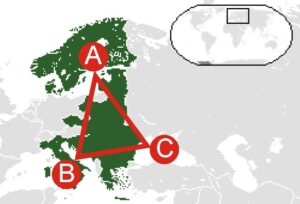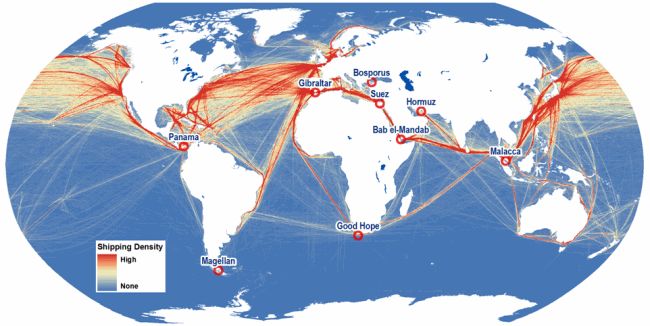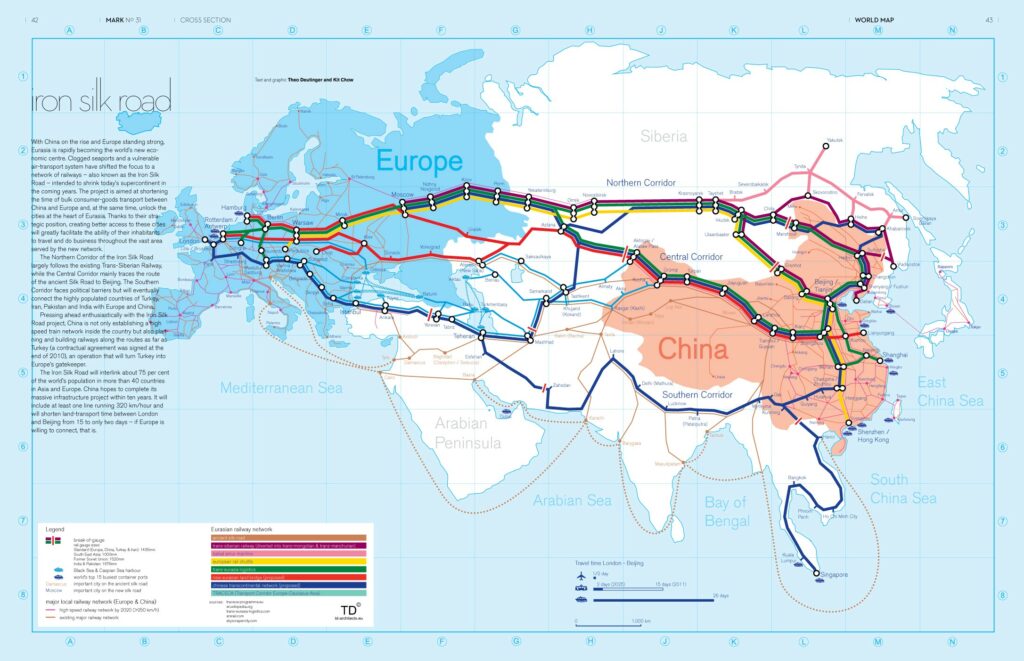The highly dynamic changes on the international arena and the shifting balance of power on a global scale create completely new opportunities for countries in the Baltic Sea region.
Intermarium
In the first half of the 20th century, the reviving Second Republic of Poland put forward the geopolitical concept of Intermarium. It was to be a federation of states, bordering the triangle of the Baltic, the Adriatic, and the Black Sea, whose main objective at that time was to oppose German domination as well as threats coming from Russia..

The Intermarium concept at the beginning of the 20th century. Source: Wikipedia, own work.
100 years later, the Intermarium concept takes on a completely different dimension and meaning. There is the growing economic power of the Far East with China at its forefront, while the economic position of the United States has relatively weakened, especially since the crisis of 2008. Russia expects that the world order will be renegotiated both in terms of security and international trade, causing tension in the international system designed after World War II. Scandinavia perceives this situation in a similar way to us, as I wrote in myprevious postregarding the growing support of Swedes to join NATO.
What might theIntermariumof the twenty-first century involve? Before we answer this question we have to transport ourselves thousands of kilometers outside of our region and accept the fact that whatever happens in our little Europe will only be a result of decisions taken in the area of the endless Pacific.
Pacific Pivot
Today, America is openly withdrawing from Europe. The Pacific Pivot strategy announced by the administration of Barack Obama will be continued irrespective of the political provenance of the next US government. The geopolitical and economic center of the world is moving into the Pacific, where the main maritime routes are still controlled by the US Navy. The Strait of Malacca is a bottleneck which connects the South China Sea with the sea route to the Persian Gulf and through the Suez Canal to Europe. We are witnessing an American diplomatic offensive in the region, which was manifested this October by signing the Trans-Pacific Partnership, excluding China, to regulate trade and activate America’s traditional allies in the region, such as Australia, Japan and New Zealand. Obviously, this situation is not beneficial for the expansive Chinese economy, which must not only maintain the patency of the current trade routes with Europe, but develop them systematically.

The flow of freight traffic on sea trade routes. Source: barufa.hubpages.com
The Chinese President, Xi Jinping, is aware of the fact that every year at least 10 million new jobs should be created to meet the internal expectations alone arising from dynamic population growth. Without maintaining a high economic growth through trade, particularly with Europe, this will not be possible. Hence, the appearance of initiatives which aim at forcing the US out of the South China Sea, through such ideas as buildingartificial islands. However, there is another project far more interesting in view of the strategic development of countries located in the Baltic Sea region.
What bothers American strategists?
To introduce an alternative to maritime trade in the sensitive area of the South China Sea and the Strait of Malacca, the Chinese initiated the so-called New Iron Silk Road – project that will allow them to trade with Europe in an unhindered way and without the participation of the United States. The concept refers to the ancient Silk Road and envisages the construction of a transport and logistics network across the Euro-Asian mainland by 2025.

Map of the New Iron Silk Road. Source: td-architects.eu
A rail network (including high speeds of up to 320 km/h) will of course form the basis of the system, but a road network, logistics centers and a number of accompanying infrastructure investments are also to be constructed. TheNew Iron Silk Road project is to connect 75% of the world population, joining more than 40 countries in Europe and Asia. Land transport from Beijing to Warsaw, Berlin or London will last…2 days.
The financial base is to be provided by the Asian Infrastructure Investment Bank (AIIB)launched this year as a Chinese initiative. Denmark joined it in April, Sweden, Norway and Finland in June and Poland – in September. So it is already happening before our very eyes, although with the current situation on the international arena, the final outcome of the project cannot be accurately predicted.
New Intermarium
Let’s look at the map of the project where the planned key world trade route runs through the Euro-Asian mainland. Scandinavia, having no direct connection to the New Iron Silk Roadnetwork, needs a trade gateway, a logistic hub which will provide access to the global circulation. Germany? Certainly yes, as a key European partner and a beneficiary of the project due to the deepening dependence of its economy on trade with China.
Nonetheless, it is always good to have an alternative, especially one that brings significant added value. At this point, Poland can enter the game, as in the context of theNew Iron Silk Road, our location at the intersection of the future axis of communication between the north-south and the east-west is extremely convenient for Scandinavia. As the leader of the Visegrad Group and in cooperation with Romania, we can provide Sweden, Norway and Denmark with independent economic access, through the corridor of the Baltic, Adriatic and Black Seas, to Turkey, India, Vietnam and other countries in the Far East which are forecast by Oxford Economics, among others, to be key trading partners of Europe in the 21st century, beside China.
The last decade of successfully developing trade relations between Poland and Scandinavia, summarized in ourTSL Report “A course on Scandinavia” is a solid foundation for further cooperation, this time outside our region. We just have to give up our old ways of thinking and skillfully play our part on the geopolitical world chessboard.
Author:Michał Trojanowski – Marketing Manager

